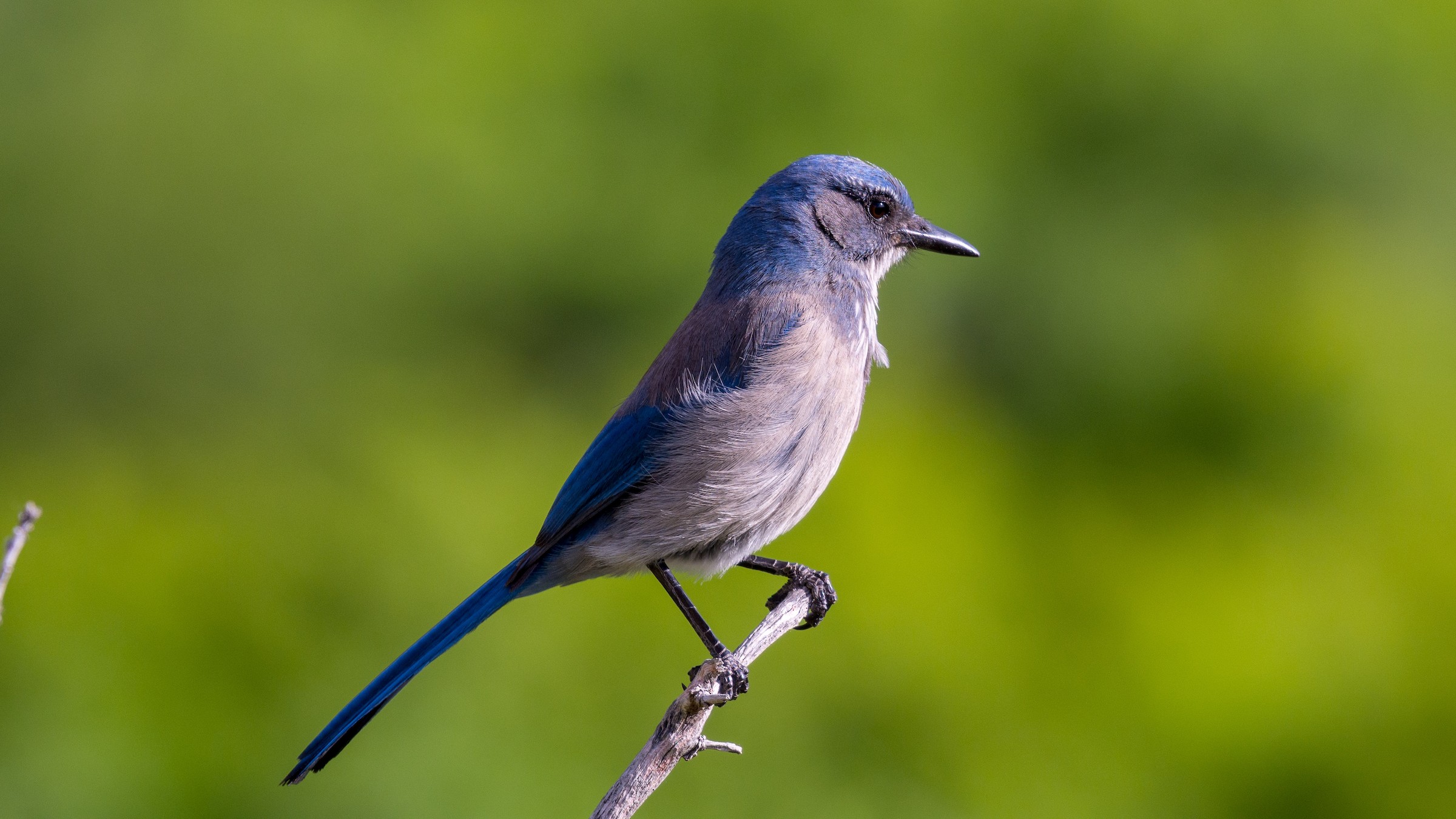
In the vast tapestry of the avian kingdom, certain species command attention not merely for their visual splendor but for an intrinsic brilliance that elevates them beyond the ordinary. Among these are the Jays, members of the esteemed Corvidae family – a lineage renowned for housing some of the most intelligent birds on Earth. To truly appreciate a Jay is to recognize a connoisseur’s choice in the world of nature, a creature embodying both exquisite beauty and remarkable intellectual prowess, a living testament to nature’s bespoke design.
These small to medium-sized passerine birds are often distinguished by their vibrant, colorful feathers and their unmistakably vocal presence. While superficially set apart from their larger, darker corvid relatives like crows and ravens, Jays possess a depth of character and a complexity of behavior that beckon closer observation. Their ability to adapt, communicate, and even manipulate their environments speaks to a sophistication rarely found in the natural world, appealing to a discerning appreciation of avian exclusivity.
Our journey delves into the fascinating world of North American Jays, a diverse group offering a compelling study in avian evolution and adaptation. From the familiar flashes of azure to the more elusive shades of green, each species presents a unique narrative, enriched by specific habitats, diets, and social structures. Join us as we uncover the distinct allure of these twelve remarkable species, beginning with some of the most iconic denizens of the continent’s skies, each a masterwork of natural design and an embodiment of wild intelligence.
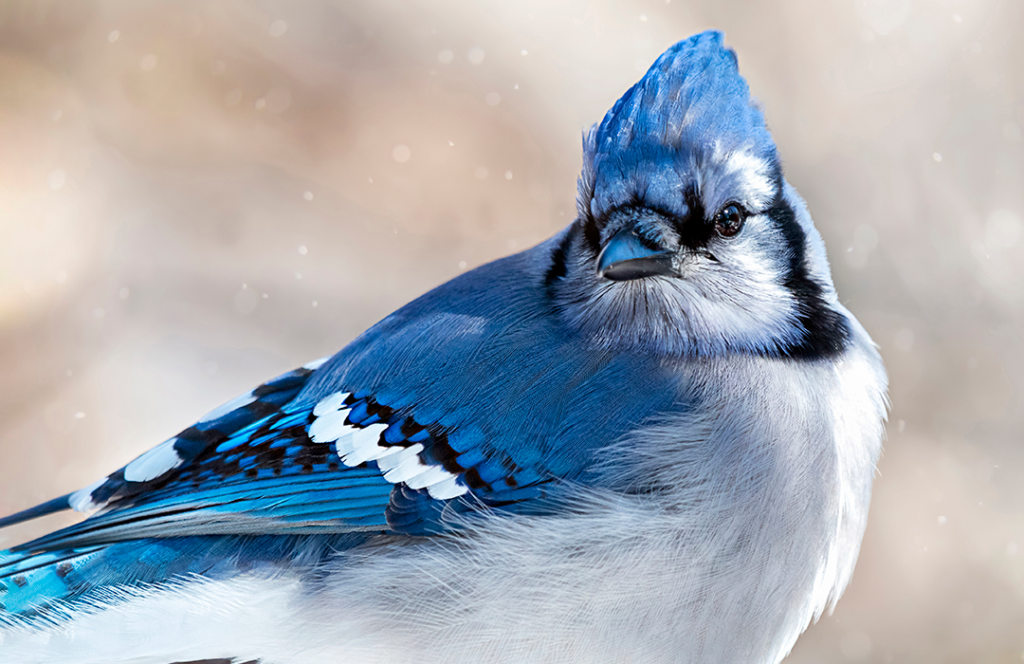
1. **Blue Jay**The Blue Jay, *Cyanocitta cristata*, is arguably the most recognizable of its North American kin, a common large songbird gracing the eastern United States and southern Canada. Its striking appearance is instantly identifiable: an upright blue crest, a back adorned with vibrant blue and black markings, and a pristine white underside. Distinguishing features include prominent white wing-bars, creating a visual signature that is both bold and elegant.
While predominantly found east of the Rocky Mountains, these birds occasionally venture west during winter, showcasing a degree of nomadic flexibility. Blue Jays are known for their boisterous nature, frequently communicating through a repertoire of harsh clicks, peeps, ‘caws,’ and whistles. Yet, they also possess a gentle, fluted song, typically reserved for the intimacy of courtship, revealing a surprising duality to their vocal expressions.
Their diet is as varied as their calls, consisting of insects, various nuts and seeds, and grains. They display a particular fondness for peanuts, acorns, and beechnuts, often traveling in family groups in search of these favored foods. While some observers may perceive them as assertive, or even ‘bullies,’ due to their territorial behaviors and occasional predation on the eggs or nestlings of other birds, their intelligence is undeniable, evident in their playful interactions with shiny objects, which they have been observed carrying around, dropping, and retrieving with curiosity.
Attracting Blue Jays to a backyard requires a thoughtful approach. They prefer platforms or tray feeders, which facilitate a quick arrival and exit, perfectly suited to their agile nature. Offering peanuts, sunflower seeds, and suet on these feeder types, alongside a birdbath, can reliably draw these charismatic corvids. Their preference for forests, particularly those abundant with oak trees, reflects their reliance on acorns, a cornerstone of their seasonal diet.
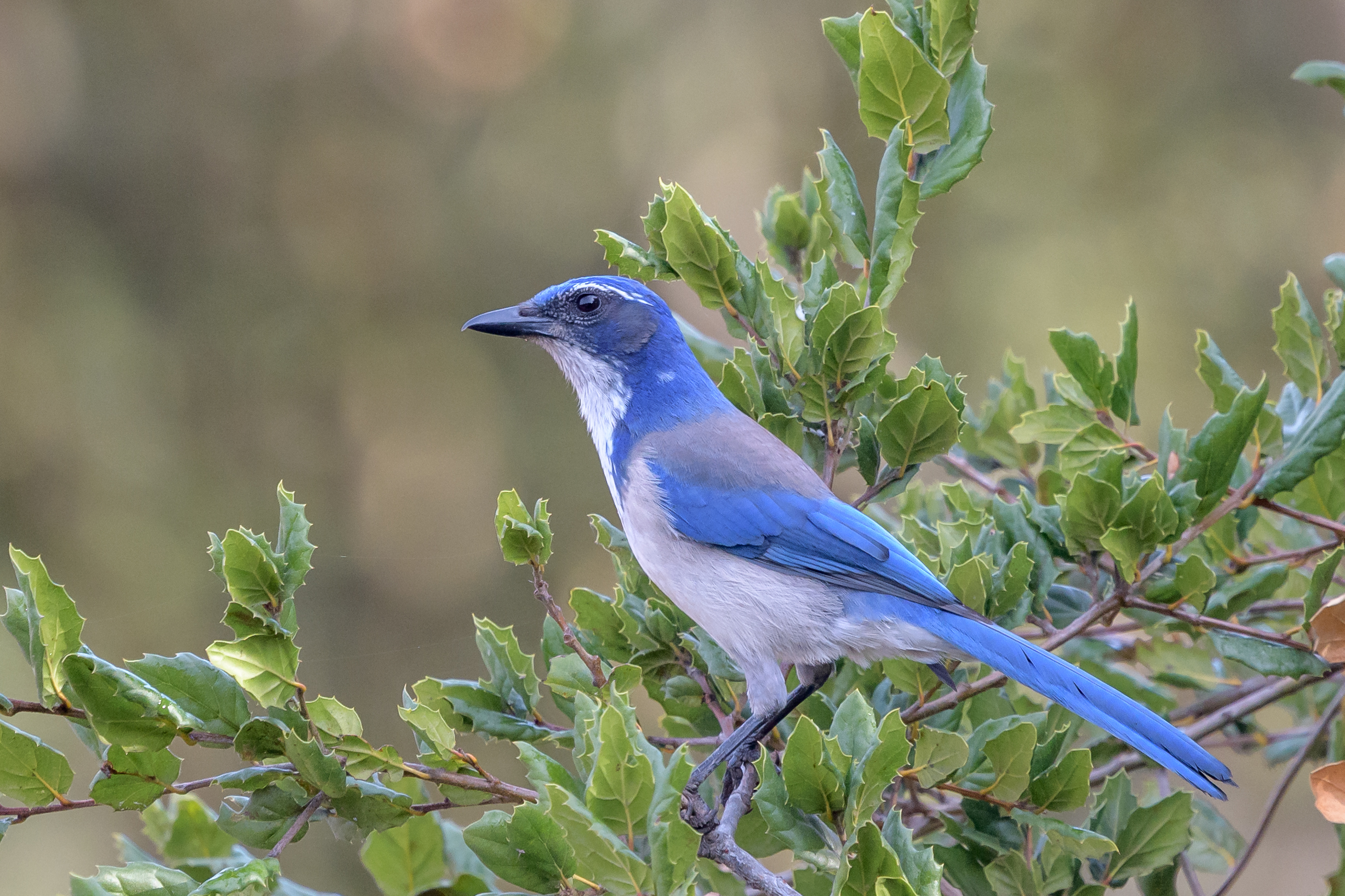
2. **California Scrub-Jay**Residing along the Pacific Coast, from British Columbia down to Baja California, the California Scrub-Jay, *Aphelocoma californica*, is a large songbird known for its lengthy tail and distinctive coloration. These birds present a captivating blend of rich blue and gray on their backs, contrasted by whitish undersides and a bright blue breast band. While visually similar to the Woodhouse’s Scrub-Jay, their colors are notably more vivid, offering a striking presence in their natural habitat. They are larger than a robin but retain a more compact stature than a crow.
California Scrub-Jays are commonly found in shrubby areas, oak woodlands, and even within suburban yards and parks, adapting well to environments shaped by human presence. They are renowned for their scolding cries, which serve as a warning or a territorial declaration, yet they also engage in sweet, quiet, musical songs when paired with their mates, a common trait among many jay species. These birds exhibit an omnivorous diet, consuming both insects and fruit during spring and summer, transitioning to seeds and nuts, particularly acorns, in the fall and winter, which they are known to bury for later retrieval.
Their nesting habits are a testament to their dedication to family. Nests are typically hidden within oak trees, meticulously constructed by both parents over approximately ten days. These cup-shaped structures are fashioned from twigs and moss and lined with soft materials. A clutch of one to five eggs is laid, with an incubation period of around seventeen to nineteen days until hatching. An intriguing aspect of their social behavior, according to the University of California – Davis, is their tendency to screech loudly over the body of a deceased jay, inviting others to join in a collective mourning that can persist for up to half an hour.
To entice California Scrub-Jays to one’s backyard, sunflower seeds and peanuts are particularly effective. Their bold nature and preference for easily accessible food sources make them frequent visitors to well-stocked feeders. Observing these birds offers a fascinating glimpse into a species that masterfully balances assertive territoriality with intricate social and parental bonds, making them a true marvel of the avian world.

3. **Steller’s Jay**For those venturing into the mountainous West, the Steller’s Jay, *Cyanocitta stelleri*, offers an unmistakable presence. This large songbird is uniquely distinguished as the only all-dark jay species to possess a prominent, black triangular crest that dramatically rises from its head. The deep black coloration extends over their entire head, chest, and back, creating a striking contrast with the rest of their body, which is a rich blue. Subtle white or blue spots may also be observed on their forehead, adding a nuanced detail to their commanding appearance.
Commonly inhabiting evergreen forests, Steller’s Jays typically explore the higher canopies but are not shy about descending into backyards, especially where feeders are present. Their range encompasses western US states, western Canada, Mexico, and Central America, thriving in environments that offer both dense cover and opportunities for foraging. These jays are known for traveling in flocks, a communal behavior that only disperses when they are engaged in nesting, emphasizing their social inclination.
Their diet is broad and opportunistic, reflecting their adaptability. They forage for insects, various seeds and berries, and even eggs and nestlings. Interestingly, they are not above making a nuisance of themselves around unattended picnic lunches or garbage, showcasing their cleverness and resourcefulness in securing a meal. Their vocalizations are equally diverse, including a quick “shek-shek-shek” call, distinct “kaw” sounds, rapid two-toned calls, peeps, and harsh guttural expressions. Furthermore, Steller’s Jays possess a remarkable ability to mimic other noises, including the calls of different bird species, and even the sounds of sprinklers and alarms, highlighting their auditory intelligence.
Nesting typically occurs near the top of conifer trees, where they construct sturdy nests from leaves and plant material, binding them together with mud and lining them with soft pine needles for comfort. To attract these magnificent birds to one’s backyard, peanuts and suet are highly effective. Their distinctive appearance, intelligent behavior, and adaptable nature make the Steller’s Jay a captivating subject for any observer of the natural world, a true highlight of the Western avian landscape.
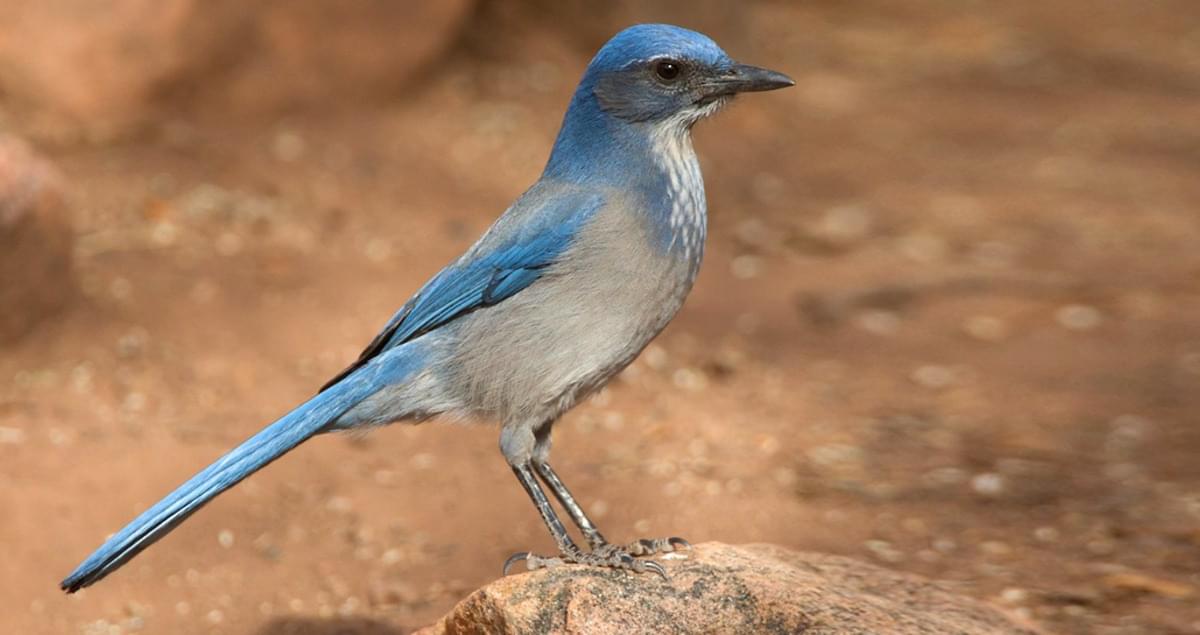
4. **Woodhouse’s Scrub-Jay**The Woodhouse’s Scrub-Jay, *Aphelocoma woodhouseii*, presents itself as the archetypal ‘Blue-Jay of the Southwest,’ gracing the inland regions of the southwestern US states and Mexico with its presence. These birds are characterized by a lovely blend of blue and gray, specifically light blue and dark gray on their backs, with lighter gray undersides, creating a more subdued palette compared to their California counterparts. They possess a long, striking blue tail but, notably, lack the crests seen in Blue Jays and Steller’s Jays. A small, subtle necklace is present, differentiating them from the California Scrub-Jay, which boasts more vivid colors and lacks this particular feature.
Woodhouse’s Scrub-Jays are predominantly found in wooded areas, especially those dominated by pinyon-juniper trees, and in various scrubby landscapes. Their diet shifts seasonally, with insects and fruit forming the bulk of their sustenance during the warmer summer months. As winter approaches, their focus turns to nuts and seeds, a crucial adaptation for survival in harsher conditions. This resourcefulness extends to their notable behavior as ‘thieves’ of the avian world, particularly known for stealing food from the stores of other birds, a trait that sets them apart.
One of their most documented pilfering habits involves raiding the granary trees of Acorn Woodpeckers, a testament to their cleverness and persistence in securing food. Their nests are comparatively simple, typically constructed as platforms of twigs and lined with moss and grass, often situated in the protective cover of their preferred woody habitats. These structures provide a safe haven for their young, showcasing a practical approach to reproduction.
For those aiming to welcome Woodhouse’s Scrub-Jays to their backyard, offering sunflower seeds and peanuts proves to be an effective strategy. Their presence adds a unique charm to southwestern landscapes, offering an opportunity to observe a species that, despite its somewhat understated appearance, exhibits remarkable intelligence, adaptability, and an intriguing knack for opportunistic foraging, making them a fascinating study in avian survival.
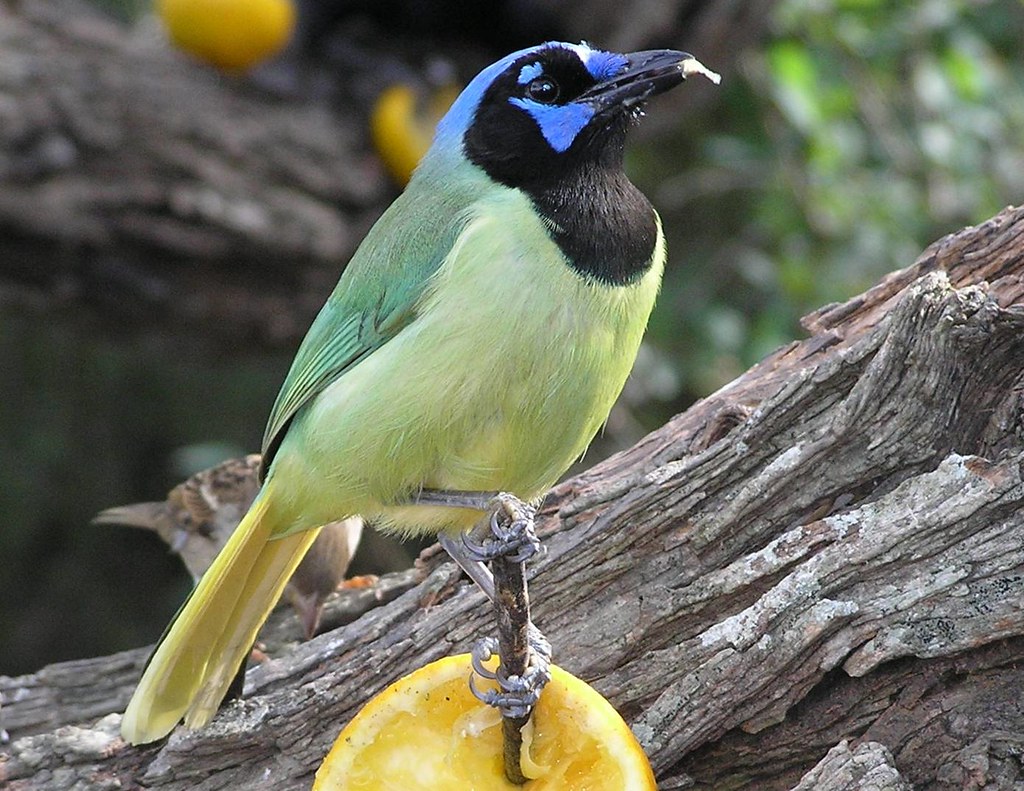
5. **Green Jay**The Green Jay, *Cyanocorax yncas*, is a spectacular vision, a living mosaic of bright green, blue, and black that immediately captures the eye. These vibrant birds feature dark green backs, gradually transitioning to paler bellies, all crowned with striking bright blue and black heads. Their colorful plumage makes them a rare and coveted sighting within the United States, typically found only in the southernmost reaches of Texas. More broadly, their natural habitat extends along the coasts of Mexico, Central America, and South America, marking their presence as a true tropical marvel.
Historically limited in the US, the Green Jay has begun to expand its range northward, with sightings now extending to Laredo, Corpus Christi, and even San Antonio, nearly 300 miles north of its traditional strongholds. This expansion is thought to be, at least in part, a response to changing climate conditions. They thrive in woodlands near streams and other water sources, and lucky birdwatchers may spot them at feeders in Texan wildlife refuges, particularly where oranges, grape jelly, peanuts, sunflower seeds, and corn are offered.
Their diet is diverse, encompassing insects, fruit, and seeds, showcasing their omnivorous adaptability. A particularly fascinating ‘fun fact’ about Green Jays is their capacity to use tools, a rare and sophisticated behavior among birds. They have been observed utilizing sticks to pry up bark, gaining access to hidden food sources beneath, demonstrating a remarkable problem-solving ability. Their vocalizations are as varied as their colors, producing a medley of fast calls that can be described as ‘Kaw’-like, buzzing, clicking, peeps, and even screams, reflecting a rich communicative repertoire.
Green Jays construct relatively simple twig nests, which they line with moss, leaves, and grass for comfort. Interestingly, even their eggs possess a subtle greenish tint, further harmonizing with their vibrant appearance. The ongoing expansion of their range presents an exciting, albeit complex, scenario for researchers and enthusiasts alike, offering a dynamic glimpse into how species adapt and move in response to environmental changes, making the Green Jay a truly compelling subject of study.
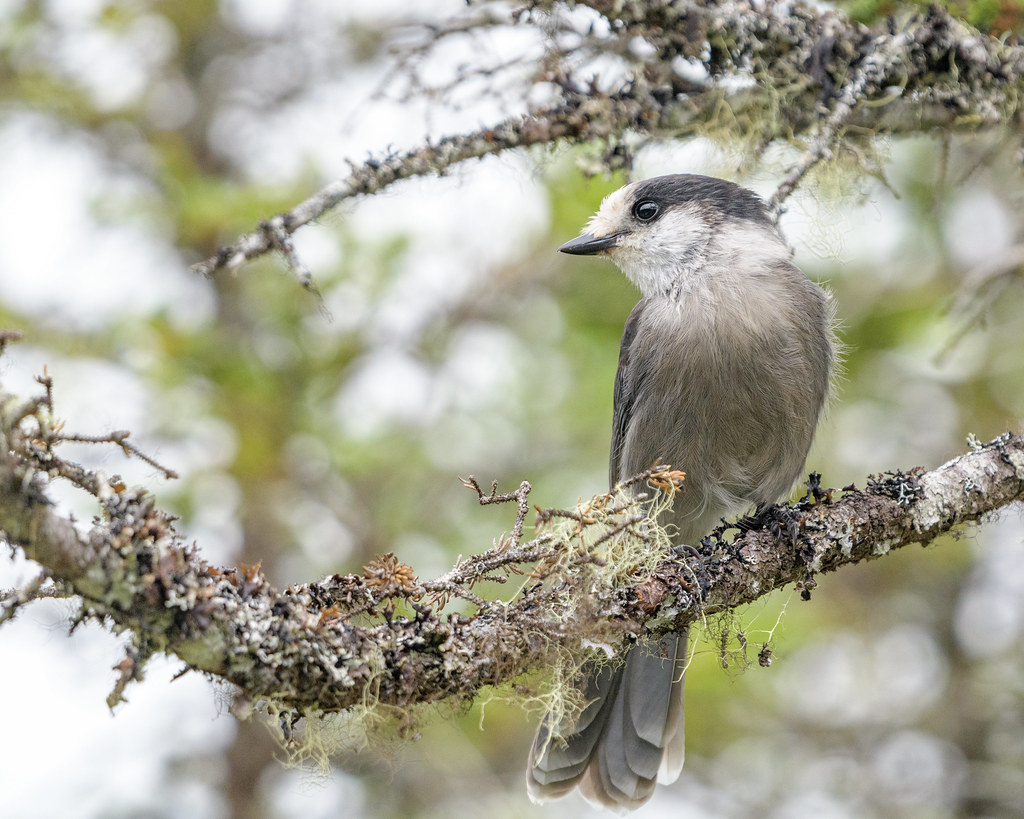
6. **Canada Jay**The Canada Jay, *Perisoreus canadensis*, formerly known as the Gray Jay, presents a distinctive and endearing departure from its more flamboyant relatives. These birds are characterized by their soft, fluffy gray and white plumage, featuring a dark gray back and a pale gray underside. Their heads and throats are white, framed by a distinctive black band that runs around the back of the head. Interestingly, females share the same appearance as males, while juveniles are noted for their darker, more uniformly grayish-blue coloration. Geographic variations also exist, with Canada Jays in the Rockies typically appearing paler than those found further north in Canada.
Residing in the boreal and coniferous forests of Canada, Alaska, and the high mountains of the northwestern US, particularly where spruce trees are prevalent, Canada Jays are uniquely adapted to colder climates. They possess a small bill, perfectly suited for twisting off meat, aligning with their opportunistic feeding habits. These jays are famed for their remarkable tameness, often approaching hikers, hunters, and campers without fear, even eating directly from a human hand – a trait that has earned them the affectionate nickname ‘whiskeyjack.’
Their diet is diverse, including insects, berries, and dead animals, but they show a strong preference for meat, bread, suet, and other soft foods. Unlike many jays that bury their caches in the soil, Canada Jays are known for their unique method of caching food in bark or branches, utilizing a special saliva to mold food into a sticky blob, which they then affix to hiding places. Despite their sweet appearance, they possess a ‘deadly side,’ preying on baby birds and even hunting smaller species like chickadees and warblers, particularly when supporting their own nestlings.
Canada Jays are generally more silent than their boisterous kin, though they do produce a gentle whispered song alongside harsher calls and clatters. They are also adept at imitating other bird species. Their nests are built remarkably early in the season, often while snow still blankets the landscape, constructed from dead twigs and lined with feathers, strategically placed on the south side of conifer trees for warmth. To attract these fascinating and resilient birds, most types of bird food, including seeds and suet, offered in tube or platform feeders, will suffice. Their unique adaptations and behaviors make the Canada Jay a truly captivating emblem of the northern wilderness.” , “_words_section1”: “1948

